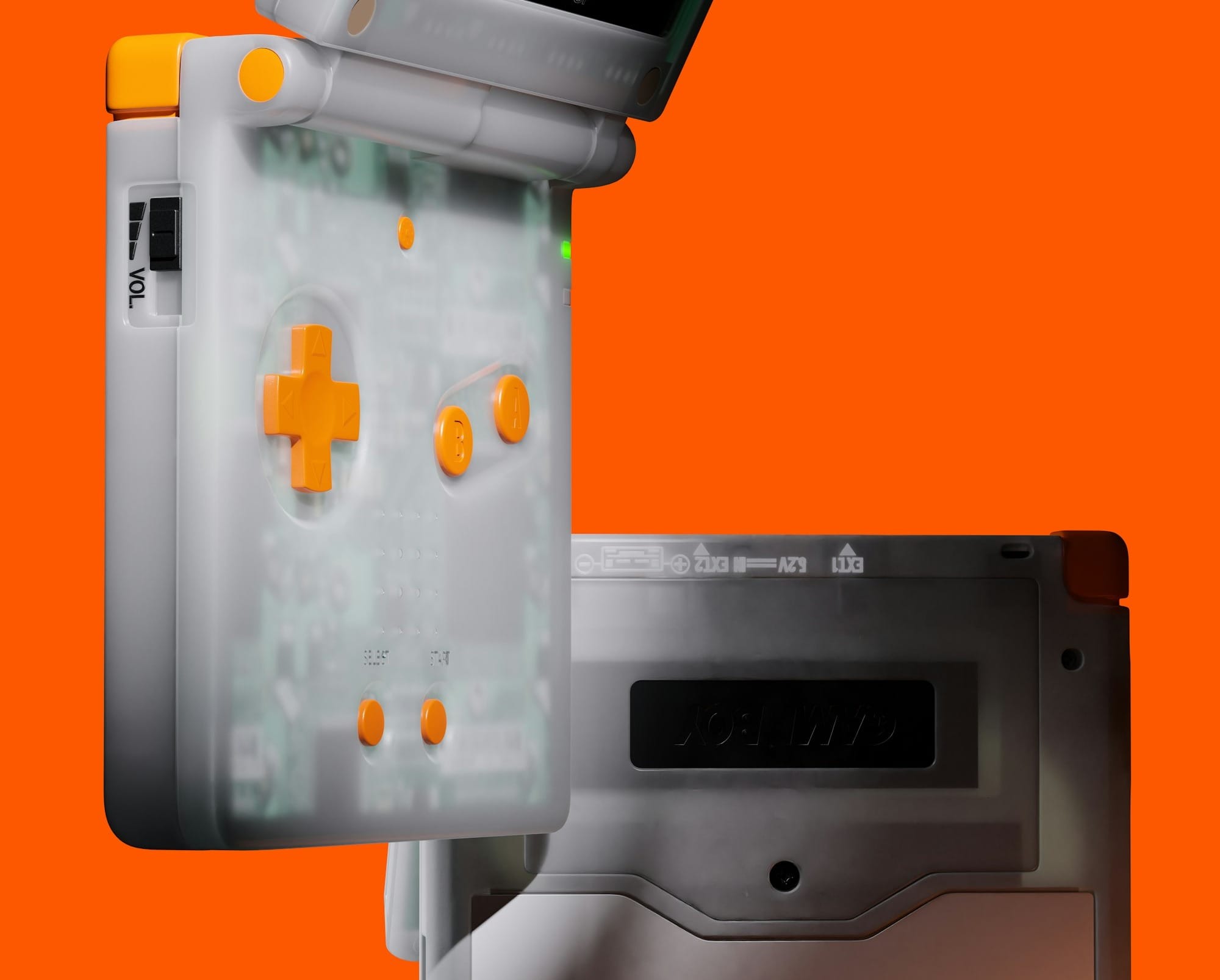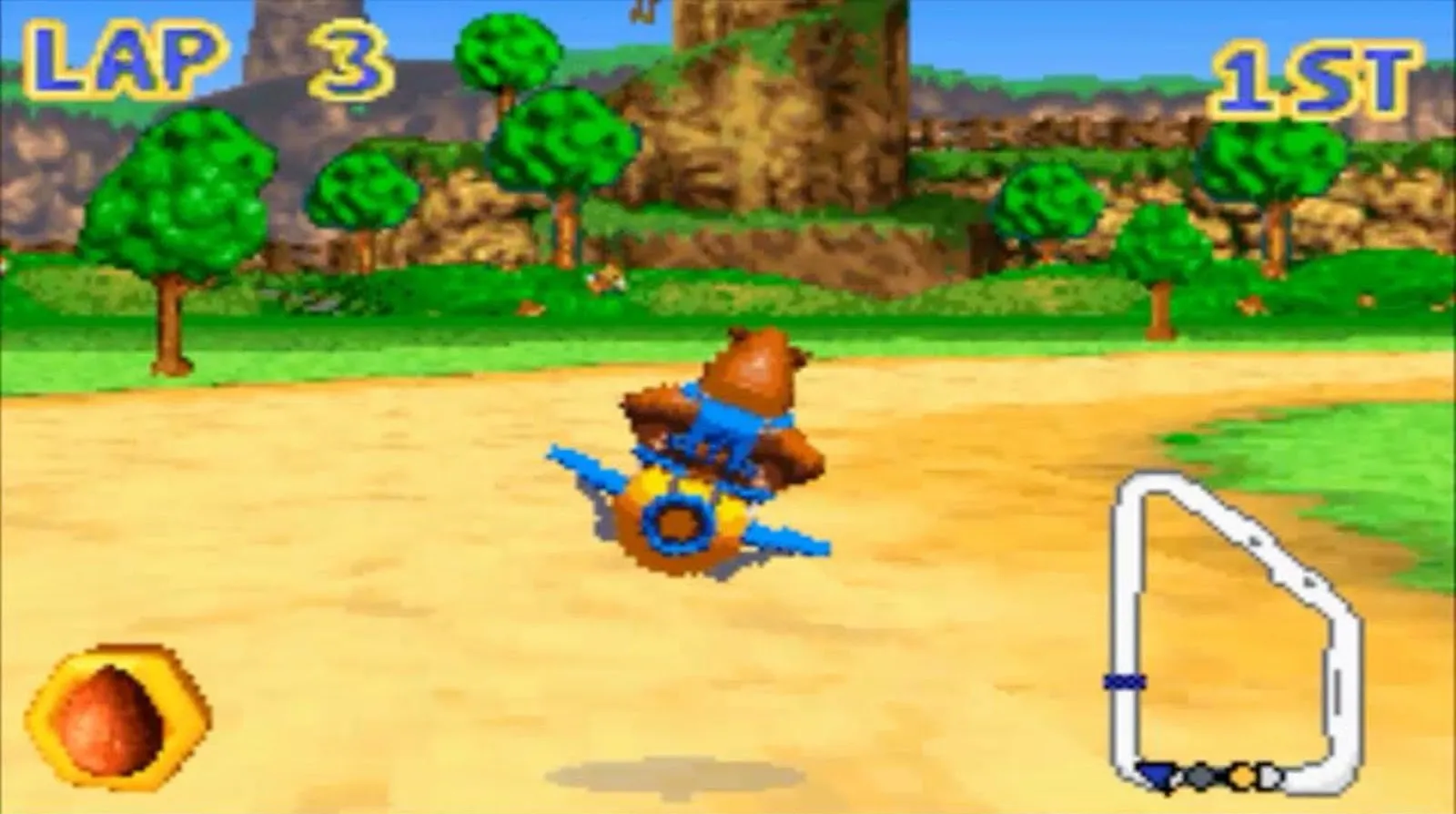A Brief History of 3D Graphics on the Game Boy Advance
The iconic little handheld was capable of some incredible feats

For many modern gamers, it’s all too easy to forget the cultural impact Nintendo’s eponymous Game Boy had on not only the gaming industry, but the wider world in general. Nearly 119 million of the late great Gunpei Yokoi’s little handheld wonder were sold. The Game Boy’s impressive 14 year run in production is filled with absolute classics. Donkey Kong, Kirby’s Dream Land, Super Mario Land 2: 6 Golden Coins, The Legend of Zelda: Link’s Awakening, Wario Land: Super Mario Land 3, Tetris — even the unstoppable force that is Pokémon got its start here. There’s a reason why everyone’s grandmother calls any handheld gaming peripheral they see a “Game Boy,” because it mattered that much when it was released.
The Game Boy went through multiple iterations over its tenure as the handheld king. The Game Boy family includes the original Game Boy, Game Boy Pocket, Game Boy Light, Game Boy Color, and three versions of Nintendo’s last production Game Boy: the Game Boy Advance, Game Boy Advance SP, and Game Boy Micro. Like with many products under the Nintendo brand, achieving peak performance and rendering sleek graphics were not the mission for the Game Boy series, instead giving quality, addicting experiences that could be taken on the go. The Game Boy Advance (GBA) felt like a different beast when it arrived on the market in 2001. While still woefully underpowered compared to it’s successor (the Nintendo DS) or even to its competitor (the PSP) the colorful 32-bit graphics and 256 kB of external wRAM made everyone feel as though they had a SNES in their pockets. For 2001, that was a hell of a feat.

Games on this little system were sometimes downright gorgeous. Castlevania: Aria of Sorrow is a beautiful 2D sides scroller with impressive animations and appropriately oppressive surroundings. The Legend of Zelda: The Minish Cap boasted an isometric perspective filled with vibrant colors animated in the style of Wind Waker. Yoshi’s Island: Super Mario Advance 3 was essentially a portable Yoshi’s Island and took no less than a miracle to make it work so effortlessly on the handheld. One thing tying these titles together, despite their differing art styles and genres, is that they’re all rendered in retro-pixelated 2D. The GBA excelled at rendering 2D sprites on flat or isometric planes. It didn’t take long, however, for developers to realize that the GBA wasn’t limited to rendering just two dimensions, and many games were rendered in full or partial 3D to some seriously impressive varying levels of success.
The GBA was never specifically designed to render 3D graphics. There’s a general misconception that the GBA used Mode 7 graphics like its bigger brother — the SNES — but this is a bit of a misnomer. The GBA was actually only able to use modes 0–5, whereas the SNES could actually use modes 0–7. This basically means that true 3D, even with scrolling backgrounds, wasn’t really in the GBA’s wheelhouse, so developers had to get crafty in order to have the system render what we perceived as 3D. One of these games was launched alongside the system with F-Zero: Maximum Velocity. F-Zero: Maximum Velocity (along with games like Mario Kart Super Circuit) were 3D games in the same vein of 3D we had come to know from the SNES — Mode 7-esq racers comprised of scrolling, flat tracks using perspective to cast the illusion of 3D. Any assets in the games, like obstacles and sprites, were 2D. These basic 3D racers were just the tip of the iceberg when it came to what the GBA was capable was in a three dimensional space.

The big 3D standout from the launch line up, however, was Tony Hawk’s Pro Skater 2. While not entirely 3D, the skaters are fully rendered in polygonal 3D, and while it gets a little pixelated at distance, it looks really damn good for a twenty year old game. The 3D rendered skaters blend pretty seamlessly with the pre-rendered 2D backdrops to accurately encapsulate the feeling that the Tony Hawk series invoked at the time. It also shows that right out of the gate, developers were interested in pushing the GBA hardware to its limits and showing its 3D capabilities.
The GBA employs a few different techniques in order to render or otherwise emulate 3D on such a small machine. Obviously, the main hurdle when rendering 3D for the GBA is utilizing the notable lack of horsepower the console has under the hood. The most popular ones were ray casting (a “simple” programming function that renders lines instead of full polygons to save on processing power), voxel rendering (generating surface geometry within the camera’s visibility) and utilizing specific 3D assets while pre-rendering environments (like the original Resident Evil, but much more simplified.)
Shooters, sports games, and racers seemed to rule the roost when it came to 3D experiences on the GBA. The joke of “Doom can run on anything” holds true with both Doom and Doom II being ported. The original Doom is technically here in its entirety, albeit in the form of the less-optimal Atari Jaguar version. It may be horribly bit-crushed and pixelated, but if you wanted Doom on the go in 2001, it was a very serviceable experience. Doom was achieved with ray casting — similar to the original — and is just one example of 3D first-person shooters gracing the GBA. Big names like Duke Nukem, Serious Sam, 007, and Medal of Honor all got major releases on the platform. Some of these games used ray casting, others didn’t, but they were all fully 3D first person shooters on the go.

Sports games also saw plenty of 3D releases on the GBA, and the implementation here makes a lot of sense. Sports titles typically take place in a set location with a specific number of assets rendered in at any given time, with very little variance. The later games in the monumentally popular Madden American Football series as well as the Fifa series were considerably impressive for handheld sports games at the time. Fifa ’07 is presented entirely in 3D, from the stadium, to the field, to the players. Some of these titles give you the ability to watch highlights, rewind the footage, and even have free control of the camera to see those 32 bits in their full glory. Despite the DS already being on the market for nearly two years, a lot of love was put into these later-life sports games to try to make them worth playing on Nintendo’s last Game Boy variant.
Racing games are where the GBA shined and really utilized the ability to create 3D experiences. The most impressive of these racing games, however, has to be VD-dev’s V-Rally 3, released in 2002. A rally style racing game with big, detailed tracks and beautifully realized sprites, V-Rally 3 runs as smooth as butter and looks excellent for the GBA, even including a cockpit view. After this is probably 2003’s Top Gear Rally, developed by Tantalus Interactive. One of the few 3rd party 3D GBA games to be officially backed by Nintendo (in the US,) Top Gear Rally boasts fully rendered 3D models for its cars that are meticulously detailed. Somehow, Tantalus invoked the feeling of weight and resistance rally cars are designed for out of the GBA’s tiny screen and basic D-pad and A/B button combination. There’s so many examples of excellent 3D racers on the GBA: Mario Kart Super Circuit, Driv3r, Sega Rally Championship, Stuntman, Drome Racers. It’s astonishing how much time and effort were put into making these games not only play well, but look the part too. Especially when that meant simplifying the experience to fit on the GBA.

What’s more interesting than what we did get in terms of 3D titles on the GBA is what we didn’t get. Tons of tech demos and in-game engines were developed, but never released or utilized. A company called Prograph Research created a 3D engine called DR advance to create GP Advance, an unlicensed Formula 1 racer. Neither saw a publisher or the light of day. There was a cancelled voxel 3D Dune game seeing you take control of an ornithopter in first person. Banjo Pilot was originally a voxel-based racer before being turned into a Mode 7-based racer. In the years since, there’s been a ton of information coming out on the various demos and builds for some incredible looking games that never saw release.
On top of this, there’s some oddities that stand out. The Max Payne GBA port (an isometric top-down 3rd person shooter) is surprisingly good. Asterix & Obelix XXL is a gorgeous and competently made 3rd person action platformer. The Crash Bandicoot GBA games have some seriously detailed 3D chase sequences, complete with fully rendered environments and models. Unfortunately, the vast majority of these games were either middling, or downright bad. Most of them felt more like tech demos showcasing how far the GBA’s hardware could be pushed rather than full, rounded experiences or “must-have” games. 3D on the GBA seemed to work much better when it was used simply to enhance the strong 2D 32-bit aspects of the GBA, instead of trying to replace them. Regardless of the lack of fun-factor, these games were huge triumphs for the system.
The Game Boy Advance was, regrettably, the last ever Game Boy console. Over 1,500 different titles were developed for it, and interest in this platform hasn’t waned. There’s a whole market dedicated to modifying the classic handheld to better fit with modern audiences: a backlit screen, more responsive buttons, and rechargeable battery packs. Even as far as 2021 saw a Kickstarter game titled Goodboy Galaxy set to release physically on the GBA — the first game to do so since 2008 — smash its goal. The love for this portable remains, and because of that, it’s well worth looking into the incredible things developers were able to do with such limited hardware in the bygone era of the early 2000s.
